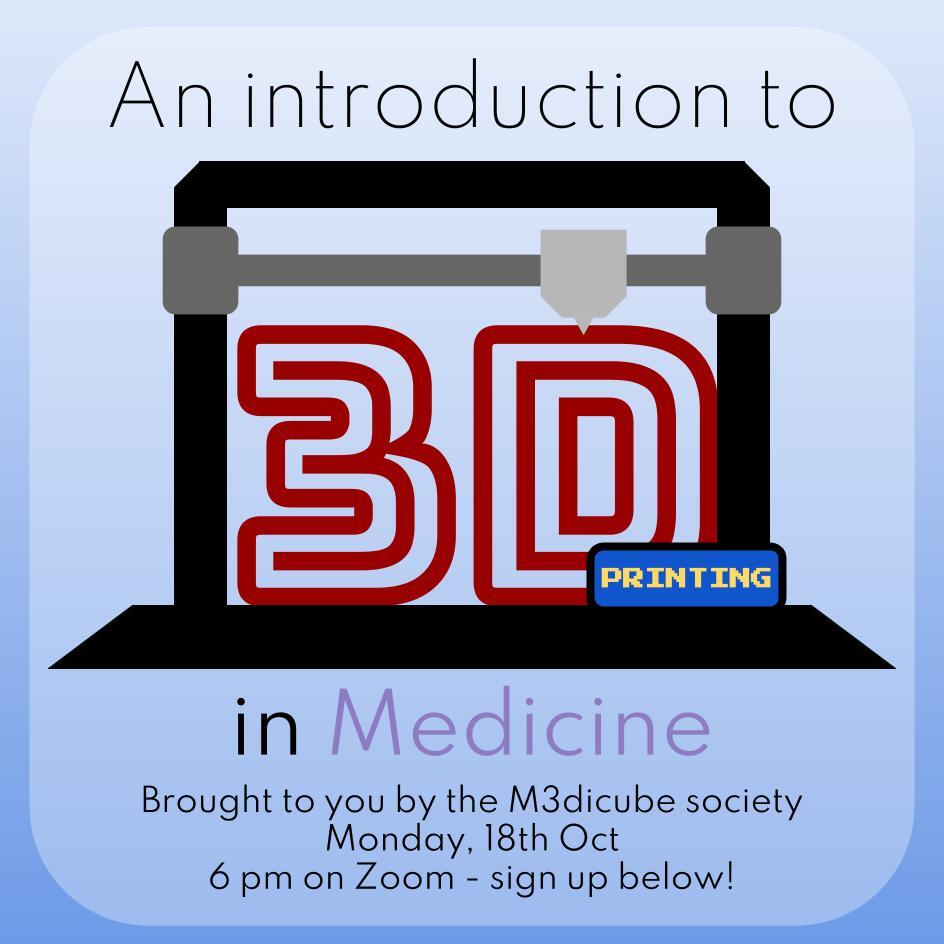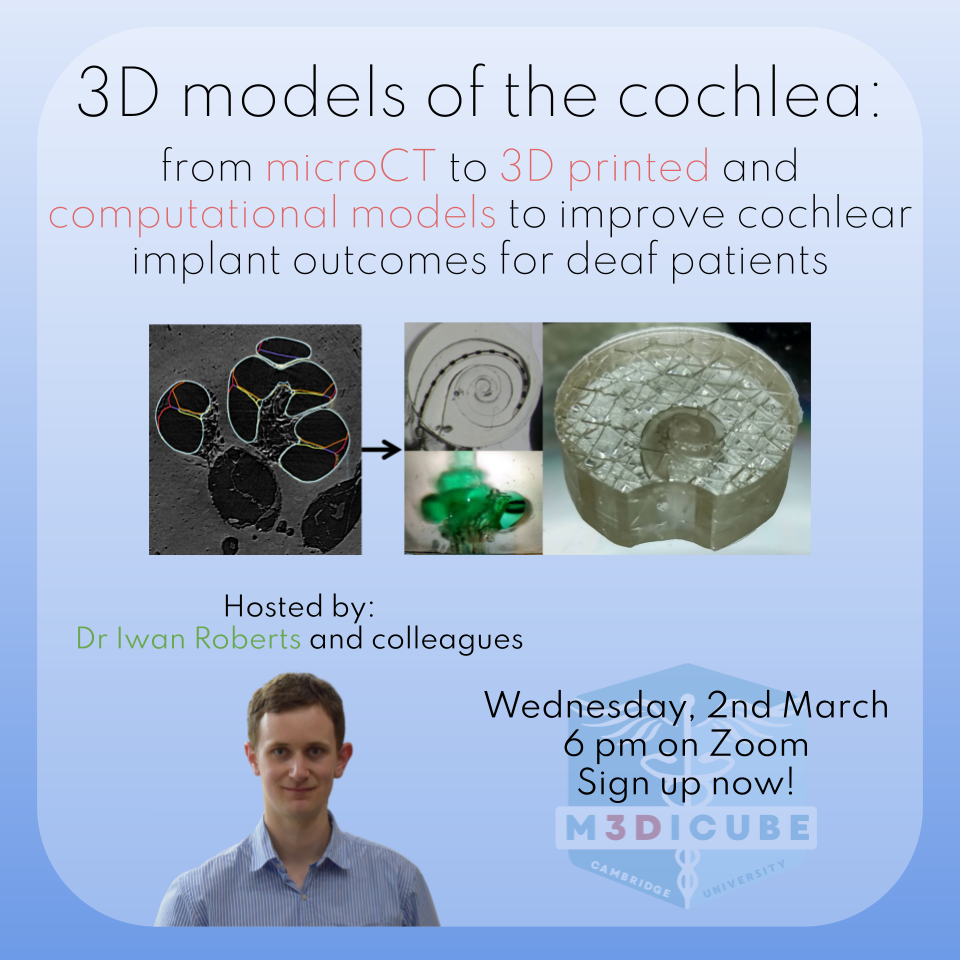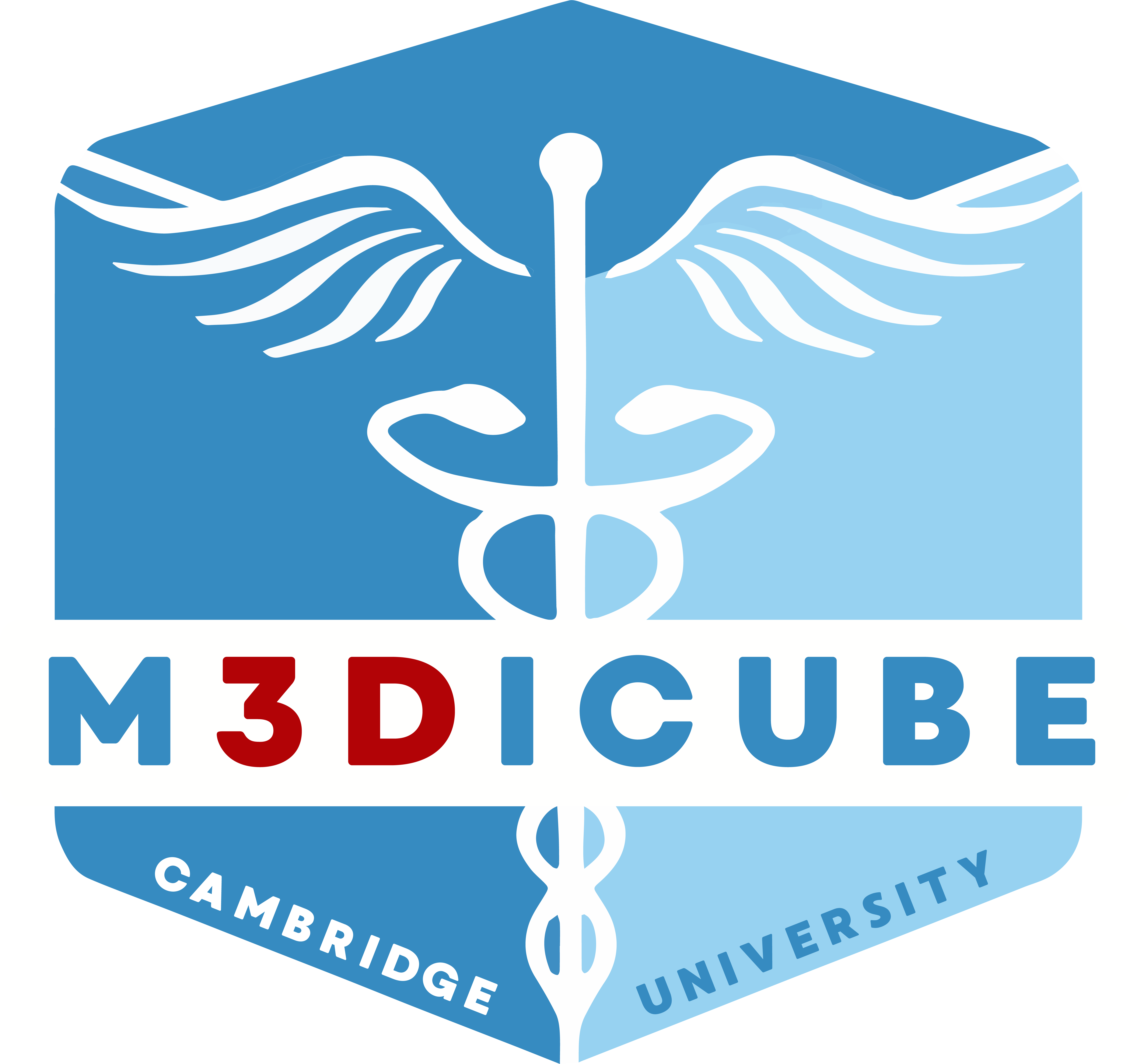18 October 2021 – An Introduction to 3D Printing in Medicine
Interested in medical technology? Want to learn more about 3D printing in Medicine and potentially get involved in our projects? Make sure to attend M3dicube’s first talk of the year: ‘An Introduction to 3D Printing in Medicine’. We will be covering the basics of 3D printing and its applications in healthcare. Furthermore, you’ll be first to find out about our future events and our upcoming project (one which may particularly appeal to all you budding neurosurgeons!)

Further links:
Check out the recording of the talk below:
15 December 2021 – Application of 3D printing in rehabilitation, medicine and surgery by Professor Richard Bibb

Join us for a very inspiring talk delivered by Professor Richard Bibb on the application of 3D printing technologies in rehabilitation, medicine and surgery!
Prof. Richard Bibb is a Professor of Medical Applications of Design at Loughborough Design School. He has expertise in advanced design and product development technologies (Rapid Prototyping, 3D Printing, Additive Manufacturing) for more than 20 years. He is more particularly interested in the application of these technologies in rehabilitation, medicine and surgery. He founded the the Design for Digital Fabrication research group (D4DF).
This lecture is about the adaptation and application of advanced design and product development tools and techniques such as CAD and 3D Printing in medicine and surgery. It will illustrate how the tools and techniques from design can help to improve reconstructive surgery, prosthetic rehabilitation and orthotics, leading to enhanced quality of life for a wide range of patients. The lecture will highlight the significant advances we made in our research over the last 20 years and give a view on the future of this research.
2 March 2022 – 3D models of the cochlea

Cochlear implants are electrodes into the cochlea of the inner ear they can directly electrically stimulate auditory nerves to convey sound to the severe to profoundly deaf. However, there are still several limitations clinically in their insertion and electrical stimulation for optimal patient results. Therefore, we have developed ways to segment and characterise human microCT data to 2 different kinds of models:
1) Multisensor force and pressure sensing optically clear models to measure insertion forces;
2) Porous models filled with saline to replicate the electrical properties of the cochlea. By using these models we can get a more complete picture of the physical interactions of cochlear implants with different cochlear anatomies to improve patient outcomes.
Sign up here !
